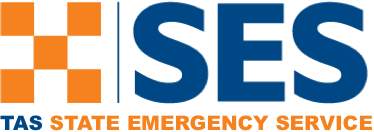Tasmania Fire and Emergency Service (TFES) Reforms
What are the TFES Reforms, and what is changing?
The Tasmania Fire and Emergency Service (TFES) Reforms are about supporting our fire and emergency services so that they can continue to keep Tasmanians safe through strategic and well-supported prevention, preparation, response and transition to recovery arrangements.
As outlined in the TFS-SES Strategic Plan 2024-2028, our purpose, vision and mission are focussed on working together as progressive, professional and unified organisations to protect life, property and the environment; and to keep Tasmanian communities safe from, and resilient to, the impacts of fire, flood, storm and other emergencies.
Organisational alignment and TFES implementation are central to achieving our strategic priorities.
The TFES reforms will:
- Establish the TFES in legislation, bringing together the SES and TFS onto a common operating platform
- Establish the role of Fire and Emergency Services Commissioner (FES Commissioner) in legislation as the operational lead of TFES
- Establish the State Fire and Emergency Services Commission (SFESC) as the statutory authority in charge of TFES, with a skills-based board
- Continue the TFES as an operational pillar of the Department of Police, Fire and Emergency Management
- Establish ongoing consultation forums to brief the SFESC and FES Commissioner on our stakeholder needs
- Establish a volunteer charter in legislation
- Replace the existing Fire Service Act 1979 and regulations with contemporary, principles-based legislation, and amend the Emergency Management Act 2006.
The reforms are led by the Fire and Emergency Services Commissioner, who is supported by a Steering Committee and a working group. An Executive Reference Group made up of SES and TFS senior leadership provides advice and assists the Commissioner to keep staff, volunteers and stakeholders informed on the status of the reforms. Opportunities for comment, feedback and input to implementation of the reforms are provided.
Status of Reforms
During 2025 work to progress the reforms has continued, with a focus on the drafting of legislation, the form and structure of the State Fire and Emergency Services Commission and development of a volunteer charter.
An internal TFS and SES expert working group is providing advice on the drafting of a new Act and associated Regulations to ensure the new TFES legislation reflects best-practice in a modern emergency response landscape.
A position paper on the State Fire and Emergency Services Commission was released for comment for a three-month period ending on 28 February 2025. The Position Paper and submissions received are available here: Position Paper – State Fire and Emergency Services Commission.
Information and comments received in response to the Position Paper have been considered and it has since been determined that the Fire and Emergency Services Commissioner will be a member of the Fire and Emergency Services Commission. A subcommittee model to ensure effective representation of staff, volunteers and other stakeholders is being refined.
A draft Volunteer Charter has been developed and consultation with signatories will commence soon.
The Charter is intended to demonstrate the commitments made to volunteers by the organisation and Government to ensure their safety and recognise their contribution. This includes commitments to protect them from liability when acting in good faith, provide them with support and training, and ensure their efforts to keep the Tasmanian public safe.
Importantly the Charter acknowledges that both SES and TFS are fundamentally volunteer organisations, and that the TFES will continue to recognise and prioritise the contributions of volunteers. The project team will be meeting with emergency and industry stakeholders in coming months as part of finalising the draft legislation.
More information
Reform Journey (TFS website)
Contact
For further information, to register for updates on the reforms or to request a briefing by the project team, please contact tfes@dpfem.tas.gov.au

